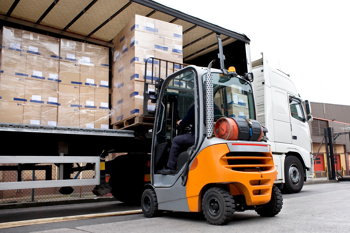
In the first quarter of 2024, consumers in the UK spent £50.2 billion on FMCG - a 6.2% raise compared to 2023. This growth was largely driven by fresh and perishable food categories due to an apparent drop in inflation. By September 2024, total till sales growth at UK supermarkets had slowed to +4.0%, largely due to the transition back to regular routines after the summer holidays.
And that’s just what we’re after: Showing you how you can navigate market changes and seasonal fluctuations when selling FMCG products within your own market.
We'll help you understand these concepts so you can minimise costs and increase sales for your e-commerce business without skimping on customer satisfaction or product quality. Let's get a closer look at how to best approach managing FMCG inventory, starting with the basics of clarifying their roles and common challenges.
What are fast-moving consumer goods (FMCG)?
Fast-moving consumer goods (FMCG) refer to products bought, used and replaced often. They tend to have lower prices and are subject to frequent purchases. Such items include snacks, beverages and personal care products that people need for their daily lives despite their perishable nature.
FMCG vs. CPG
Fast-moving consumer goods shouldn’t be confused with consumer packaged goods (CPG). The latter encompass a wider range of products that come with longer shelf lives and can be used several times.
CPGs (such as electronics or appliances) don't always get purchased quickly. It's also worth noting some products fall under one category or the other depending on the production and retail cost.
CPGs include both low-cost and more expensive items so a luxury face cream for instance will fall under CPG, not FMCG. On the other hand, single-use or disposable items as well as perishable food items are always categorised as fast-moving consumer goods.
Moving from product to consumer behaviour, another key difference is brand loyalty. With FMCG, consumers tend to be brand-loyal but are also driven by convenience and price sensitivity. With CPG, purchases can wait so brand loyalty is significant as the focus is on product quality.
The differences also extend to the supply chain. FMCG products move quickly through the supply chain, so a high-volume system is what you're looking for. With consumer packaged goods, the supply chain can be slower for items that aren't consumed quickly.
The various types of FMCG
FMCG examples are quite diverse given they impact varied aspects of consumer lives. Think of everything you can sell quickly despite its low cost. There are also several types of FMCG products that are meant to serve a specific need. To name a few:
● Beverages: Bottled drinks, juices, soft drinks, ready-to-drink teas and coffees, alcoholic beverages, sports drinks
● Food: Snacks, frozen foods, canned goods, cereals, condiments, ready-to-eat meals, dairy products
● Personal care: Cosmetics, shampoos, skin care products, oral care, deodorants, fragrances, shaving products
● Household: Cleaning products, dishwashing liquids, paper goods, kitchen supplies, pest control products, home fragrance products
● Pharmaceuticals: Over-the-counter medications such as pain relief, vitamins, first-aid products
● Pet care: Pet food, grooming products, accessories, health supplements for pets, litter and waste management products
● Baby products: Nappies, baby wipes, formula and feeding items
Fast-moving consumer goods industry
Shifting consumer preferences are always leaving their mark on the FMCG industry. It's fair to say that major players dominate the market and pave the way for smaller retailers through the innovations they bring in their constant run towards capturing consumer attention and standing out.
Added to this competition always being one step ahead, the sector also operates on thin profit margins.
At the end of 2023, the FMCG landscape showed mixed results. Total retail sales increased by 3.6% compared to the previous year. Notably, food sales experienced robust growth of 8.1%, while non-food items saw a slight decline, reflecting the new consumer priorities in a post-pandemic world. These dynamics underline the need for FMCG businesses to remain agile and responsive to market trends.
Speaking of trends, lets explore the main drivers behind the FMCG industry today and what’s likely to change?
More people are starting to prioritise environmental factors when making a purchase. These consumers look for sustainable packaging and plant-based products, coupled with a company’s real and consistent efforts to avoid food and product waste.
Somewhat related is the general interest in healthier products which has led to the rising consumer demand for cruelty-free products, clean ingredients, and personalised experiences.
But it’s not just about what consumers want. How the supply chain runs is also changing. The Corporate Sustainability Due Diligence Directive (CSDD) will soon come into action, requiring all businesses selling into the EU to comply as long as they have at least 1,000 employees and make over €450 million.
Artificial intelligence (AI) also plays a role in generating cost savings. According to a Gartner survey, top-performing supply chain organisations are already using AI and machine learning to optimise processes at more than twice the rate of their low-performing counterparts.
Challenges faced by FMCG companies
The FMCG industry faces numerous challenges. One of the primary concerns is managing the inventory of perishable goods. If you're selling such products, you should prioritise careful monitoring to sell everything before they expire.
50% of consumers say they’ll switch a product, or even retailer when dealing with shortages. This requires robust stock rotation practices that can help you prevent substantial losses from spoilage.
FMCG companies might also face operational pressure when having to quickly meet consumer demand and ensure timely delivery. Continued geopolitical instability and Brexit-related complexities are adding to the challenges of supply chains. Within this landscape, commodity costs are expected to rise as inflation puts more pressure on profit margins.
More FMCG companies have also recently started using real-time data for optimising inventory levels and ensuring product availability. For this, technologies like the Internet of Things (IoT) and advanced data analytics are preferred.
These provide real-time insights into supply chain operations, making it easier for companies to be responsive to market changes. FMCG companies now use these data analytics solutions to address a variety of their very own challenges—such as minimising stockouts and optimising inventory.
Let’s also see how the e-commerce space is ramping up preparations.
FMCG and the e-commerce landscape
Although we've passed the initial days of online shopping introduction, the shift in consumer behaviour towards online shopping is still changing the FMCG landscape.
More customers are ordering groceries and other fast-moving products online than ever before. This demand surge prompts (even rushes) warehouses to be equipped with the tools they need to handle perishable goods (e.g. efficient storage capabilities, timely product distribution).
As the reliance on e-commerce grows, logistics needs to keep pace. In August 2023 for instance, 7% of UK businesses dealt with global supply chain disruptions as a result of economic uncertainty and recent geopolitical tensions. Added to this, higher energy prices and labour shortages affected as many as 10% of UK organisations the month after.
Warehouse managers must implement robust systems to manage inventory effectively, particularly for perishable items. A warehouse management system (WMS) can play a vital role in this process, enabling facilities to optimise picking and packing operations based on product freshness.
How does the FMCG supply chain work in the e-commerce space?
The FMCG supply chain comes with its own particularities at every stage. Here’s an end-to-end overview of the supply chain process for a cereal box sold online:
1. Product development
The company conducts thorough market research to understand consumer preferences and potential new cereal flavours. The product developers come in to test and decide on a final cereal recipe for which the company has to source ingredients.
2. Manufacturing and production
The manufacturer decides on a production schedule based on the demand forecasts your company provides. The cereal is produced followed by the required quality control checks before the cereal product is finally packaged and marked according to customisation preferences and legal requirements (e.g. production date, expiration).
3. Warehousing
Once packaged, cereal boxes are stored in warehouses or shipped to these (depending on whether or not the manufacturer works with a third-party logistics provider). At this stage, inventory management systems come into play to track stock levels and prevent them from being wasted.
4. Distribution
The cereal boxes are shipped from the manufacturing facility to fulfilment centres. Whenever someone places an order for them, this fulfilment centre is responsible for packing and sending the products.
5. Post-purchase
After delivery, consumers have the right to send back the product or ask for a replacement (e.g. if the initial product was damaged during shipment). In the event of an issue, the company’s customer service team steps in.
Manage fast-moving consumer goods with ease thanks to Mintsoft’s WMS
As a next step, consider the role of technology in helping you keep up with demand as customer expectations and sales soar. Mintsoft’s Warehouse Management System (WMS) gives you the tools you need to handle inventory management so your stock levels are kept at the level you expect.
You'll also be covered in terms of picking and packing processes and the accurate tracking of any perishable goods.
Explore our Warehouse Management platform to discover how Mintsoft can help you manage your FMCG inventory!
FMCG FAQs
What is an example of FMCG?
An example of FMCG includes everyday products that are perishable but play a vital role in a consumer’s life. These are snacks, drinks, toiletries, pet products, and cleaning products. Read the complete article to get an extensive list of FMCG items and to understand how they’re different from consumer packaged goods.
What are the three major segments in the FMCG industry?
The three major segments of the FMCG industry we've outlined are food and beverages (e.g. soft drinks, alcoholic beverages), household items (e.g. cleaning supplies and paper products), and personal care (e.g. cosmetics, skin care, oral hygiene products).
What is the opposite of FMCG?
The opposite of FMCG is any durable item or non-consumer product (i.e. industrial or business products a business might purchase for use in production and operations, rather than for personal consumption by individuals). These are goods that last longer and can even cost more given they're more complex and not bought as often. Examples include furniture items, machinery, and vehicles.
